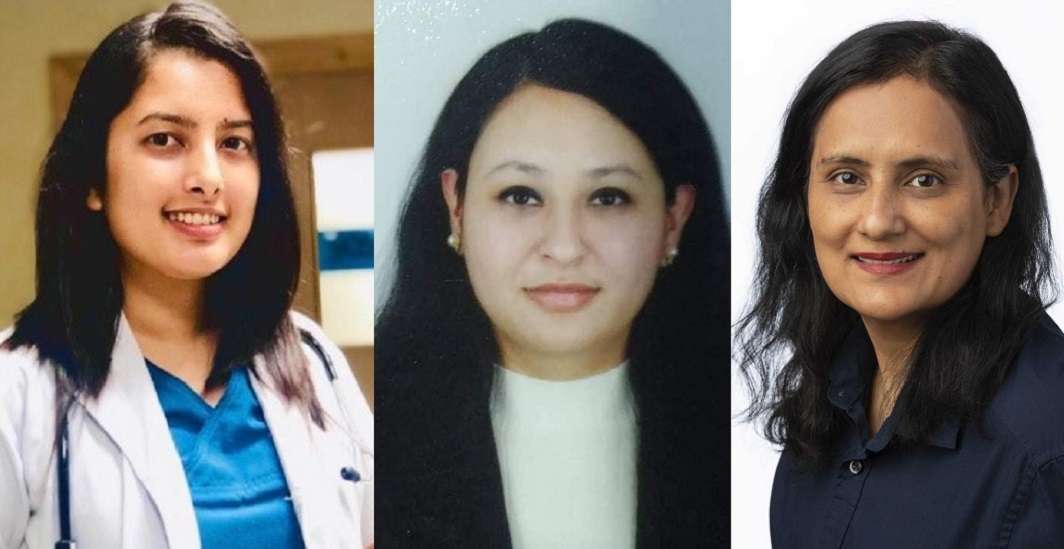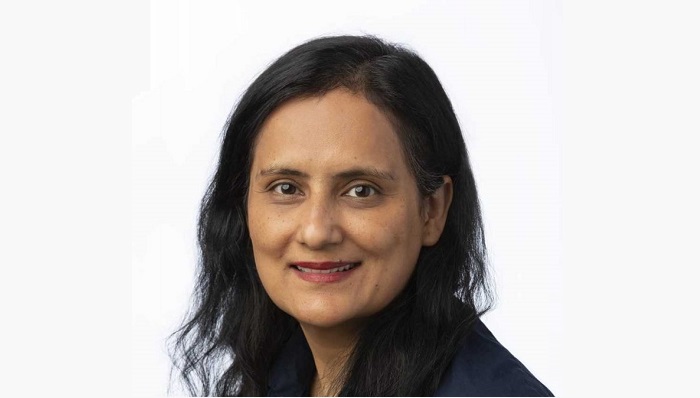Authors: Dr Sulochana Khadka, Dr Shreeya Shrestha and Dr Lubna Mirza
Introduction
Individuals of South Asian origin (from India, Pakistan, Bangladesh, Nepal, and Sri Lanka) account for a quarter of the world’s population and are one of the fastest-growing ethnic groups in the United States.
South Asians have been migrating to the United States since the late 18th century, with the majority arriving in the early 1960s. South Asian immigration has mostly happened in three phases. The first wave lasted from the 1890s until the 1920s. The second wave happened between 1966 and 1977, while the third wave occurred in the mid-1980s.
Asian Americans recorded the fastest population growth rate among all racial and ethnic groups in the United States between 2000 and 2019. According to the Census 2020, approximately 5.4 million South Asians are currently living in the United States, an increase from the 3.5 million counted in the 2010 Census. South Asians in the United States were found to have higher incidence, hospitalization, and mortality rates from ASCVD compared with other racial/ethnic minority groups as well.
Risk Factors:
1) Increase susceptibility to diabetes:
South Asians have at least a 2-fold higher prevalence of T2DM, a higher incidence of new-onset DM, and a higher prevalence of impaired glucose tolerance compared with NHWs (Non –Hispanic Whites). According to the MASALA study, South Asians had a higher prevalence of diabetes (23%) than other ethnicities after controlling for age and adiposity (6 percent in NHWs, 18 percent in blacks, 17 percent in Latinos, and 13 percent in Chinese Americans), which was attributed to lower ß – cell function in South Asians.
2) Body composition:
South Asians have low BMI, higher levels of visceral body fat, higher levels of intermuscular fat, hepatic fat, and less lean abdominal muscle mass compared to other ethnic groups. To enhance the identification of Cardiometabolic risk in this community, the World Health Organization and the American Diabetes Association have recommended decreasing the BMI cutoff points for diagnosing overweight status and obesity in South Asians. Furthermore, South Asian migrants were found to have higher BMIs than South Asians who remained in their home country.
3) Hypertension
According to the MASALA research, the prevalence of hypertension among South Asians living in the United States is 43 percent in men and 35 percent in women, which is mostly due to dietary habits and medical non-adherence.
4) Dyslipidemia:
South Asians in the United States showed higher plasma levels of triglycerides, total cholesterol, and LDL-C, as well as lower levels of HDL-C, which was related to a higher prevalence of insulin resistance and Cholesterol ester transfer protein abnormalities.
5) Diet:
The MASALA study found two distinct dietary patterns among South Asians in the United States: a Western diet pattern that included dairy products, fried snacks, pizza, and potatoes, and a vegetarian diet that included a lot of snacks, rice, and sugary drinks.
6) Physical activity:
According to the MASALA study conducted in the United States, South Asians were less physically active than NHWs and had lower adiponectin and higher resistin levels. According to a study of an electronic health record cohort in Northern California, South Asian men and women exhibited a greater incidence of metabolic syndrome despite having lower BMI values and a lower prevalence of overweight/obesity than NHWs.
7) Smoking:
Smoking is uncommon among South Asians in the United States, while the usage of culturally specialized tobacco products (such as bidis and chewing tobacco) is common.
8) Social, psychological and environmental factors:
Chronic stressors, anxiety, depression, everyday hassles, lack of social support, and neighborhood residence are all thought to be associated with ASCVD risk and prognosis among South Asians.
9) Lipoproteins
The prevalence of carotid atherosclerosis was considerably greater in people with increased Lp(a) (>20 mg/dL) than in those with Lp(a) levels less than 20 mg/dL, according to CIMT measurements in South Asian patients with T2DM. It has been discovered that plasma Lipoprotein(a) is highly genetically regulated. The INTERHEART study discovered that an enhanced ratio of apolipoprotein B100 to apolipoprotein AI was more common among South Asians with MI than in patients from other countries.
10) Health Behaviors
According to the MASALA study, South Asians who resided in the United States for a longer period of time tended to westernize their diets by integrating more fat, alcohol, and red meat; however, vegetarians tended to have lower fasting glucose and increased HDL levels.
11) Genetic Factors
- Thrifty gene hypothesis
It states that individuals who could easily store additional energy had an evolutionary advantage during famines. Obese and overweight people, as a result, have this “thrifty gene.” This is one of the conflicting theories on how our evolutionary history may have led to ethnic differences.
- Drifty Gene Hypothesis
It states that the modern distribution of obesity is the result of genetic drift in the genes that encode the system that regulates metabolism and controls our body fatness.
- Third theory
It is hypothesized that descendants of people who migrated to colder places gained genetic variations that influenced genes for cold adaptation, conferring better metabolic rates and resistance to fat.
Risk assessment tools
For assessing the risk of ASCVD, the standard tools like the Framingham Risk Score, the AHA/American College of Cardiology Pooled Cohort Equation, the Prospective Cardiovascular Munster Score, the Systemic Coronary Risk Evaluation, and the FINRISK (Finland Cardiovascular Risk Study) risk calculator are used. Although it was developed using data from a South Asian population in the United Kingdom, the QRISK2 algorithm may be more suitable for risk calculation because it incorporates South Asian ethnicity.
Detection of subclinical CVD
Computed tomography angiography is utilized to detect high-risk individuals in the South Asian population, which has shown different ASCVD distribution patterns, more stenosis, and smaller luminal diameters in South Asians.
Coronary Artery Calcium (CAC) readings and carotid intimal-medial thickness (CIMT) assessment by ultrasonography were used to predict cardiovascular events in the MASALA study. CIMT can aid in the visualization and quantification of subclinical atherosclerosis and has the potential to serve as an additional risk classification tool.
Barriers to Accessing Care
- Low Socioeconomic status
- Racial and cultural discrimination
- Geography (eg, distance from health care center, lack of access to transportation)
- Language barriers
- Traditional hierarchies within families
- Traditional religious, dietary, and healthcare practices
- Cultural expectations and patient preferences
- Lack of support from families and communities
- Dependence on family members for decision making
- Unfamiliarity with local services
- Lack of attention to cultural factors by health care providers
Medications for CVD management in South Asians
- Statin Therapy:
According to a recent consensus statement, LDL-C–lowering therapy with statins is the mainstay in the pharmacological treatment of hypercholesterolemia among South Asians, with a proposed LDL-C target of <100 mg/dL in high-risk patients and 70 mg/dL in very high-risk patients.
The outcomes of studies such as HOPE-3 and IRIS revealed that Rosuvastatin had a greater effect in lowering LDL levels than Atorvastatin.
- PCSK9 Inhibitors:
Despite the fact that current cholesterol treatment guidelines recommend using the maximum tolerated statin dose before adding a second LDL-C–lowering agent, studies are needed to assess the improvement in cardiovascular outcomes in the South Asian population because combination therapy with PCSK9 inhibition appears promising to target the various dyslipidemias in the high-risk population, as demonstrated by the FOURIER trial done among NHW patients with clinically evident ASCVD.
- Fenofibrate
No outcomes trials of fenofibrate has been undertaken especially in South Asians in the United States. In the FIELD trial, which included NHW, adding fenofibrate dramatically reduced the incidence of nonfatal MI and coronary revascularization.
- Ezetimibe
In a small-scale study among South Asian Canadians with ASCVD or DM with persistent hypercholesterolemia on statin treatment, participants receiving the ezetimibe-statin combination reached target LDL-C levels compared to those whose statin dosage was doubled. More comparative research on combination treatment, particularly in South Asian populations, is required.
- Diabetic Drugs
South Asians may respond better to incretin-based treatments such as dipeptidyl peptidase-4 inhibitors and glucagon-like peptide-1 analogs than to commonly administered pharmaceuticals such as sulfonylureas and metformin. An algorithm for managing diabetes in Asian Indians has been proposed, taking into account factors specific to South Asians in India, such as early disease onset, non-obesity prevalence, increased insulin resistance, variations in -cell function, traditional dietary habits (high-carbohydrate diet), and low socioeconomic status.
Conclusion:
Further studies should focus on the representation of South Asians in clinical trials and assessing genetic differences pertaining to South Asians to enhance precise medication therapy. Community strategies in limited settings have been accomplished and could be adopted in a more widespread manner to lower disease risks. At the individual level, a coordinated effort has to be made with regard to the doctor-patient relationship. Clinicians have to demonstrate “cultural competency” not only regarding the increased risk of ASCVD in South Asian patients but also in making recommendations on diet and lifestyle modification. Clinicians should be able to provide South Asian patients with specific recommendations and resources on dietary changes, physical activity, and medications to these high-risk patients.
Reference:
Volgman AS, Palaniappan LS, Aggarwal NT, Gupta M, Khandelwal A, Krishnan AV, et al. Atherosclerotic Cardiovascular Disease in South Asians in the United States: Epidemiology, Risk Factors, and Treatments: A Scientific Statement From the American Heart Association. Circulation. 2018 Jul 3;138(1):e1–34.
- Traditional Healers - 06/09/2022
- Atherosclerotic Cardiovascular Disease Risk in South Asians Living In the USA - 11/07/2022
- Uncontrolled Diabetes And Related Complications With Prevention - 11/07/2022







